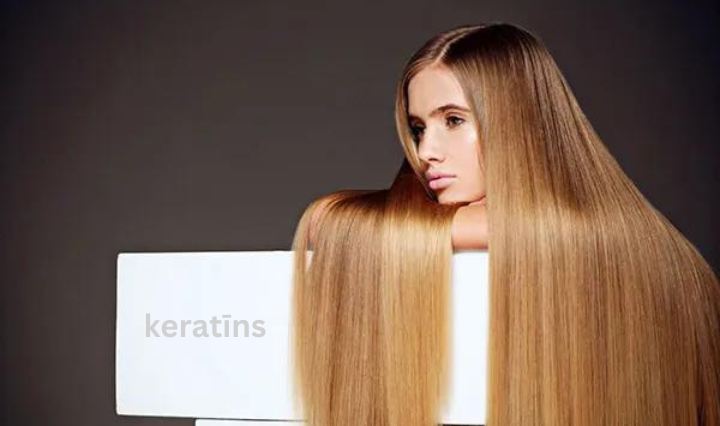Introduction to Keratin
In the world of hair care and beauty, one word that often pops up is “keratin.” But what exactly is keratin, and why is it so important for our hair? In this article, we’ll delve deep into the world of keratīns, exploring its role, benefits, and the various treatments associated with it.
What is keratīns?
Keratin is a fibrous structural protein that serves as a building block for hair, nails, and the outer layer of our skin. It is a tough, insoluble protein that provides strength and resilience to these tissues.
The Role of keratīns in the Body
Keratin plays a crucial role in maintaining the structural integrity of various parts of the body. In hair, it forms a protective shield around the hair shaft, preventing damage and breakage. In nails, keratin provides hardness and strength, keeping them healthy and resilient. Additionally, keratin helps to waterproof the skin, protecting it from external elements.
Types of keratīns
There are two main types of keratin found in the body: soft keratin and hard keratin. Soft keratin is found in the skin, while hard keratin is found in hair and nails. Each type has its own unique characteristics and functions.
Soft keratīns
Soft keratin is more flexible and pliable compared to hard keratin. It is found in the epidermis, the outer layer of the skin, where it helps to form a protective barrier against environmental damage and dehydration.
Hard keratīns
Hard keratin is much tougher and more rigid than soft keratin. It forms the structure of hair and nails, providing strength and durability to these tissues. Hard keratin is arranged in a tightly packed matrix, making it highly resistant to damage.
Sources of keratīns
Keratin can be derived from both animal and plant sources. Animal-derived keratin is commonly used in hair and beauty products, while plant-derived keratin is gaining popularity as a natural alternative.
Animal Sources
Animal-derived keratin is typically obtained from feathers, horns, and hooves. These materials are processed to extract the keratin protein, which is then used in various hair care products and treatments.
Plant Sources
Plant-derived keratin is extracted from sources such as soybeans, wheat, and corn. These plant proteins are rich in amino acids, the building blocks of keratin, making them an excellent natural alternative for vegan and eco-conscious consumers.
Benefits of keratīns for Hair
Keratin offers a multitude of benefits for hair health. Some of the key benefits include:
- Strengthening the hair shaft
- Smoothing the cuticle for enhanced shine and manageability
- Repairing damage caused by heat styling and chemical treatments
- Preventing breakage and split ends
- Improving overall hair texture and appearance
Keratin Treatments for Hair
In recent years, keratin treatments have gained popularity as a way to achieve smoother, more manageable hair. These treatments typically involve the application of a keratin-rich solution to the hair, followed by heat styling to seal the protein into the hair shaft.
Keratin Hair Masks
Keratin hair masks are deep conditioning treatments that infuse the hair with keratin and other nourishing ingredients. These masks help to repair damage, restore moisture, and improve the overall health of the hair.
Keratin Infused Shampoos and Conditioners
Keratin-infused shampoos and conditioners are designed to cleanse and moisturize the hair while replenishing lost keratin. These products are ideal for daily use and can help to maintain the results of keratin treatments.
Keratin Straightening Treatments
Keratin straightening treatments, also known as Brazilian blowouts, are salon procedures that use heat and chemicals to temporarily straighten and smooth the hair. These treatments can last for several weeks and are popular among individuals with frizzy or curly hair.
Risks and Side Effects of Keratin Treatments
While keratin treatments can offer impressive results, they are not without risks. Some potential side effects of keratin treatments include:
- Hair damage and breakage
- Scalp irritation and sensitivity
- Formaldehyde exposure (in some formulations)
- Allergic reactions
It’s essential to consult with a qualified stylist and perform a patch test before undergoing any keratīns treatment to minimize the risk of adverse reactions.
Frequently Asked Questions about Keratin
What are the benefits of keratin for nails?
Keratin helps to strengthen nails, making them less prone to breakage and splitting. It also improves the appearance of nails, giving them a healthy, glossy finish.
Can keratin treatments damage hair?
While keratīns treatments can improve the condition of the hair, they can also cause damage if not performed correctly. Overuse of heat styling tools and harsh chemicals can lead to dryness, breakage, and other issues.
How long does a keratin treatment last?
The longevity of a keratin treatment depends on various factors, including the type of treatment used, hair type, and maintenance routine. On average, keratin treatments can last anywhere from four to six weeks.
Are there any natural ways to boost keratin production?
Yes, certain foods and supplements can help to promote healthy keratīns production in the body. Foods rich in protein, vitamins, and minerals, such as eggs, fish, nuts, and leafy greens, can support keratin synthesis.
Is keratin safe for all hair types?
Keratin treatments are generally safe for most hair types, but they may not be suitable for everyone. Individuals with sensitive scalps, allergies, or certain medical conditions should consult with a dermatologist before undergoing a keratīns treatment.
Conclusion
Keratin is a vital protein that plays a crucial role in maintaining the health and integrity of our hair, nails, and skin. Understanding the benefits and risks of keratin treatments can help individuals make informed decisions about their hair care routines. Whether seeking to repair damage, enhance shine, or achieve smoother, more manageable hair, keratin treatments offer a range of options to suit diverse needs and preferences.

